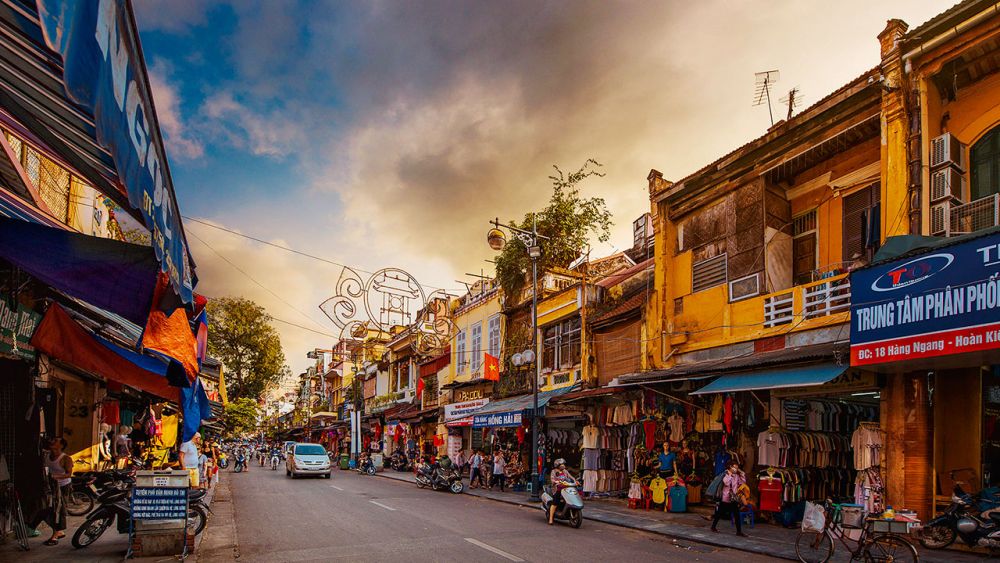

The Old Quarter of Hanoi, known as the city's historic district, has long been a convergence point for trade and culture. It is a living testament to Hanoi's rich history which dates back to over a thousand years. The area's establishment as a commercial center began in the 11th century when King Ly Thai To moved the capital of Vietnam to Hanoi, then known as Thang Long.
The Old Quarter's street layout dates back to the Ly and Tran dynasties, witnessing the city's development over several centuries. Initially, each street was dedicated to a specific type of trade or guild, with names such as Hang Bac (Silver Street) or Hang Ma (Paper Offerings Street) still reflecting those original businesses. This unique feature helps the Old Quarter serve as a living museum of Hanoi's entrepreneurial spirit.
The tourism history of the Old Quarter is deeply intertwined with the overall growth of travel in Hanoi. As Vietnam opened up to international visitors following economic reform policies introduced in the late 20th century, the Old Quarter rapidly gained prominence as a key cultural attraction.
After Vietnam's reunification in 1976 and the enactment of the "Doi Moi" economic reform in 1986, which opened the country to foreign trade and investment, tourism in Hanoi, and particularly in the Old Quarter, experienced exponential growth. International travelers started to flock to the area, drawn by its authenticity and charm.
With the recognition of Hanoi's 1000-year anniversary in 2010, the city saw significant improvements in infrastructure and conservation efforts. The Old Quarter was at the forefront of these enhancements, as it embodies the historical and cultural soul of the city.
In recent years, the Old Quarter has adapted to modern tourism trends while maintaining its historical character. Eco-friendly tours and activities have gained popularity, with travelers seeking to minimize their environmental footprint.
Cultural experiences are also on the rise, with visitors increasingly interested in activities such as street food tours, cooking classes, and traditional craft workshops that provide a deeper understanding of local life and customs.
Moreover, Hanoi's Old Quarter has embraced the digital age with the advent of mobile applications and social media playing a pivotal role in the promotion of tourism. Online travel platforms have made it remarkably easy for tourists to book accommodations and tours directly in the heart of this historic area.
Despite the impacts of the global COVID-19 pandemic on the travel industry, the future for tourism in Hanoi's Old Quarter is promising. With the district's ongoing efforts to preserve its quintessential architecture and intangible cultural heritage, it continues to be an authentic cultural jewel that captures the essence of Vietnam's capital for visitors from around the world.